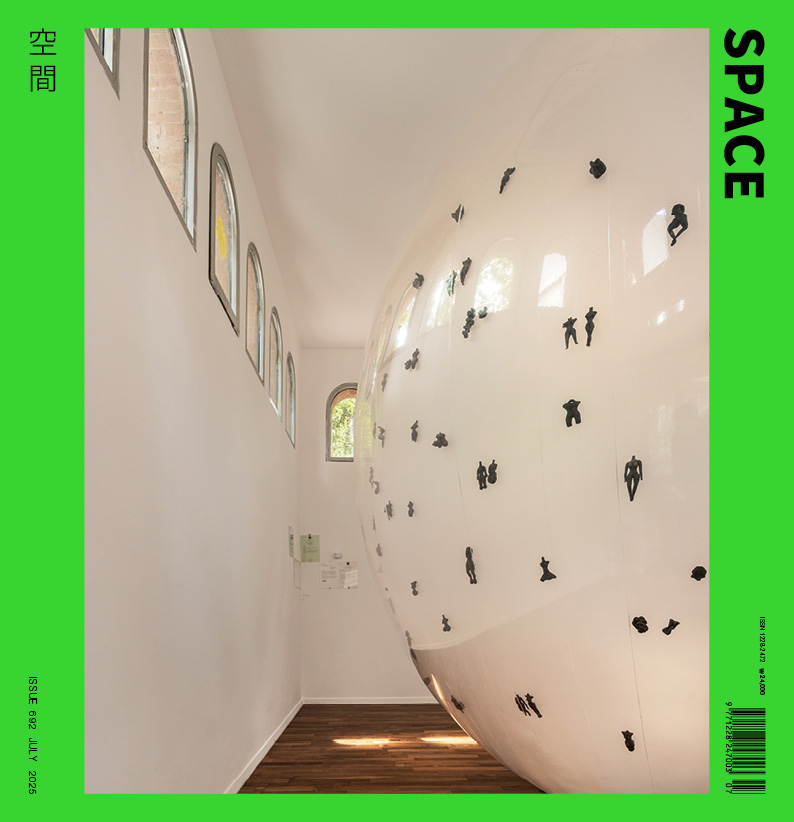SPACE July 2025 (No. 692)
We are now experiencing firsthand how the philosophy, perspective, and executive power of administration can exert its influence over all aspects of life, such as the economy, education, medicine, and culture. At a time when the world is often thought to operate like a single nation, Donald Trump, who began his second term as president of the United States in January 2025, following his first in 2017, is championing an exclusive ‘America First’ policy. Edward Dimendberg, an American architectural and urban historian, critically analyses the impact of the Trump administration’s architecture policy – devised by non-experts – on the country’s architectural landscape. He strongly criticises an executive order that has mandated the use of classical style across all federal public buildings. In a reality where respect for history and diversity, as well as the values of inclusion and solidarity, are easily dismissed and approach extremism, Dimendberg’s call for support from the global architectural community prompts reflection on resistance, unity, and the relationship between democracy and architecture. Editor
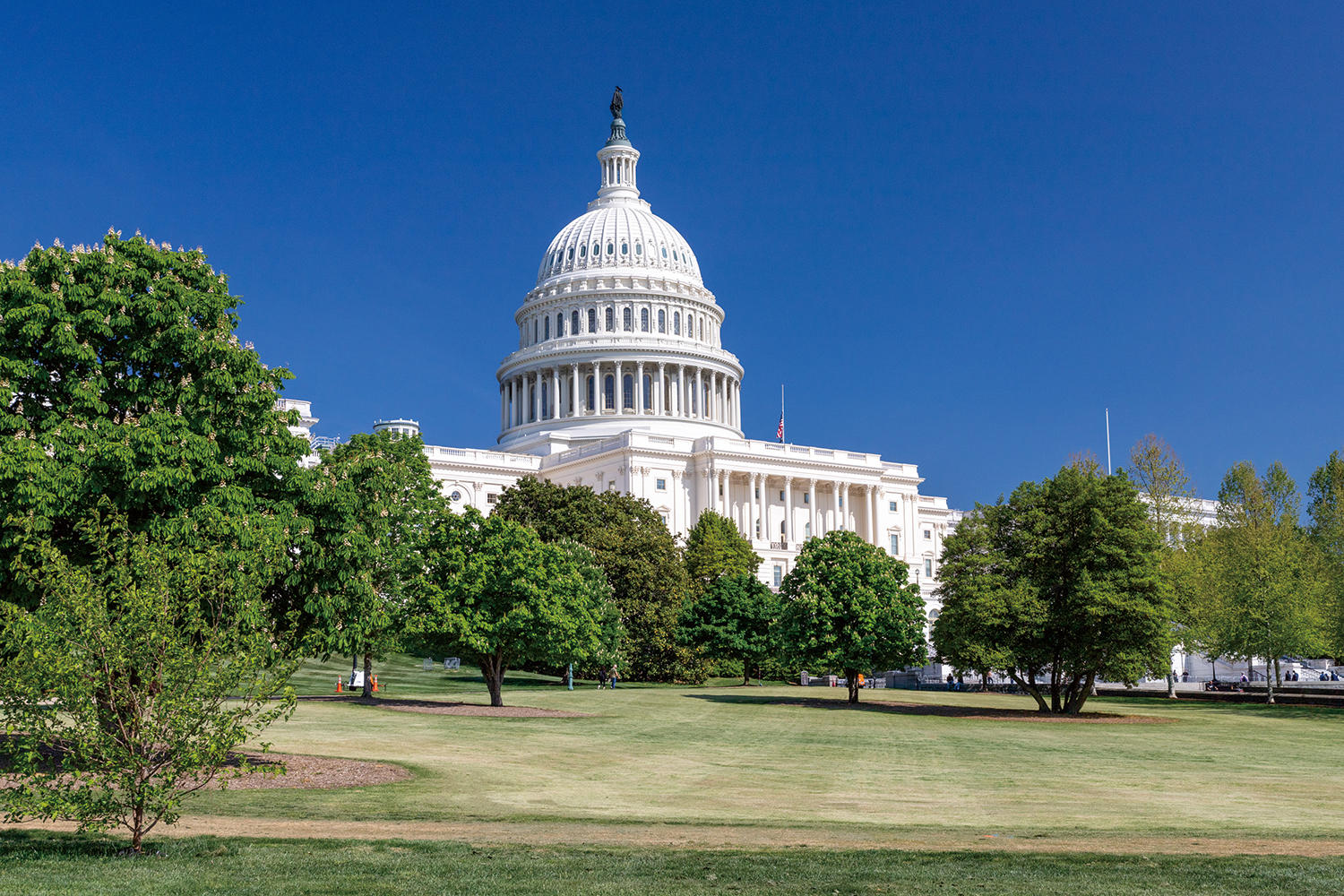
United States Capitol, Washington, D.C. (1800). Wikimedia Commons / ©Oren Rozen
Each day the consequences of the reelection of Donald Trump as president of the United States become more evident, not only to Americans but to many across the interconnected contemporary world. Although the disruptive effects of the economic and foreign policies of his administration receive constant attention, their equally disruptive impact on architecture in the US receives less attention. Tariffs on imported Canadian lumber and steel or materials from other countries will inevitably drive up the costs of domestic construction. Clean energy alternatives such as solar and wind power dependent on technologies imported from China will become more expensive, right at the moment that their use is growing and dependence on fossil fuels diminishing. As already high interest rates rise due to the greater yields paid by US Treasury bonds to attract nervous investors, real estate financing and mortgage rates will climb, dampening both development and home ownership opportunities. It is an open secret that undocumented workers are heavily represented in the construction industry and increases in labour costs following more restricted immigration, will be passed along to clients. Building housing – especially affordable housing, a serious problem the nation’s first real estate developer president ignores – will slow even further.
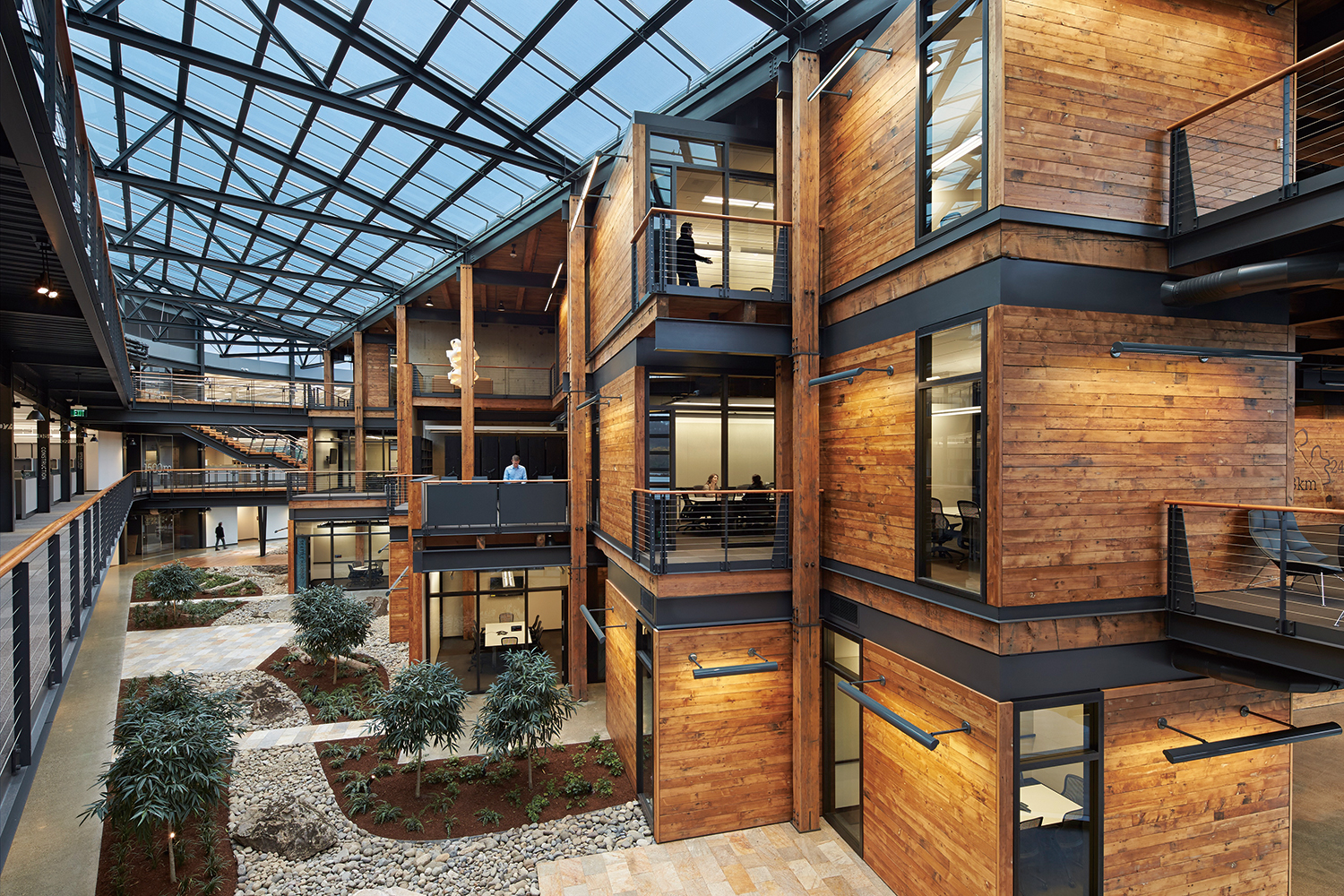
Federal Center South Building, Headquarters of US Army Corps of Engineers, ZGF Architects, Seattle, Washington (2012). Image courtesy of ZGF Architects / ©Benjamin Benschneider
Yet the most visible of these changes are likely to manifest in the realm of US government architecture. Notably, the two executive orders signed by Trump reject the history of public architecture in the US and refuse to engage with professional groups, including academics and practising architects. In the years following the World War Ⅱ, much architecture commissioned by the federal government was undistinguished work churned out by large firms. A first attempt at programmatic change was the 1954 initiative by the US Department of State to commission such modernist architects as Eero Saarinen and Walter Gropius to design embassies and trade on their prestige in the pursuit of soft power. Efforts to raise the level of domestic architecture continued with the adoption a year later by the National Parks Service of its Mission 1966 initiative to accommodate the growing number of visitors to popular destinations such as the Grand Canyon, the Everglades, and Yosemite. By hiring talented architects such as Richard Neutra and Anshen & Allen, the project introduced modern buildings often of high quality into landscapes and communities outside of urban areas.
The architecture policy for the General Services Administration (GSA), often referred to as the landlord of the federal government, was formulated in the Guiding Principles for Federal Architecture, a 1962 report by Daniel Patrick Moynihan, then assistant secretary of Labor under presidents John F. Kennedy and Lyndon Johnson, and later senator from New York.▼1 In addition to reaffirming the importance of commissioning art in federal buildings – a legacy of the Roosevelt New Deal era – the principles unambiguously defended the creative freedom of architects: ‘The development of an official style must be avoided. Design must flow from the architectural profession to the Government, and not vice versa. The Government should be willing to pay some additional cost to avoid excessive uniformity in design of Federal buildings. Competitions for the design of Federal buildings may be held where appropriate. The advice of distinguished architects ought to, as a rule, be sought prior to the award of important design contracts.’
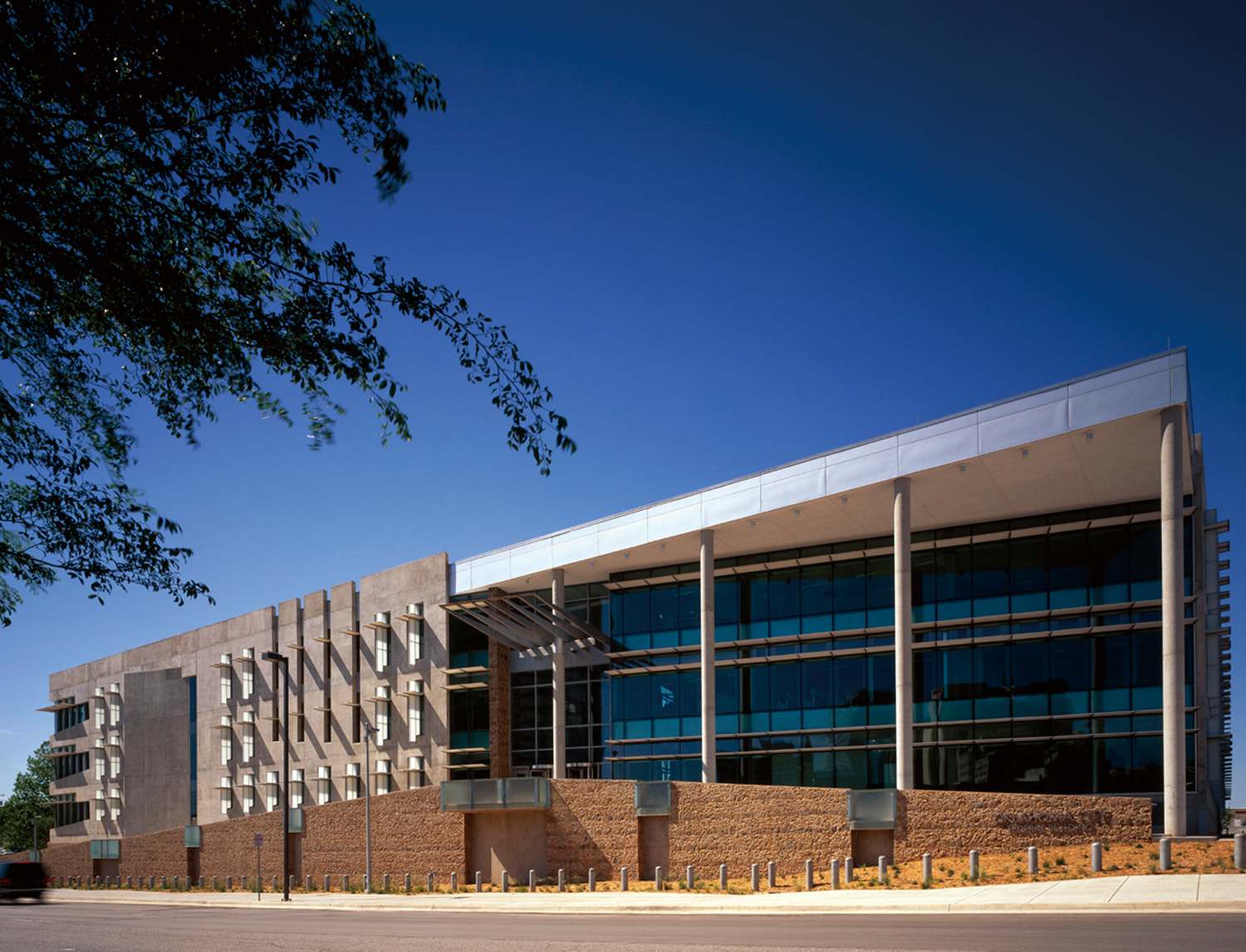
Oklahoma City Federal Building, Ross Barney Architects (2005). Image courtesy of Ross Barney Architects / ©Steven Hall/Hedrich Blessing Photographers
Drawing upon ‘the finest contemporary American architectural thought’, buildings commissioned by the GSA ‘must provide visual testimony to the dignity, enterprise, vigor, and stability of the American Government’. Notably absent in the document is any reference to a single historical or period style. The architecture requisite for democracy was understood as continually evolving and responsive to contemporary needs and culture: ‘It should be our object to meet the test of Pericles’ evocation to the Athenians, which the president [Kennedy] commended to the Massachusetts legislature in his address of the 9th of January, 1961: ‘We do not imitate—for we are a model to others.’
The public servant who did more than anyone to implement these ideas was Edward Feiner, chief architect of the GSA from 1996 to 2005 and co-creator with Marilyn Farley in 1994 of the ‘Design Excellence’ programme that sought to elevate the quality of government architecture. Under his guidance, architects such as Richard Meier, Thom Mayne, Arquitectonica, ZGF Architects, Antoine Predock, Ralph Johnson, Laurie Hawkinson and Tim Smith-Miller, and Harry Cobb obtained commissions, and the quality of federal architecture dramatically rose. Women architects such as Julie Snow and Carol Ross Barney joined what previously had been a boy’s club and proved gender identity and merit were not incompatible.
No government building programme responsible for thousands of commissions could reasonably be expected to deliver work that pleased everyone – let alone one masterpiece after another – yet the credibility and professionalism of the Design Excellence programme commended respect among many architects, as well as a belief that no single inside clique was receiving all of the work. Looking back over the career of Donald Trump as a real estate developer, it is reasonable to conclude realising buildings held in high esteem by the US architectural community played little to no role in developing his brand of insipid dark glass towers with gold signage that have been dubbed ‘OPEC baroque’.
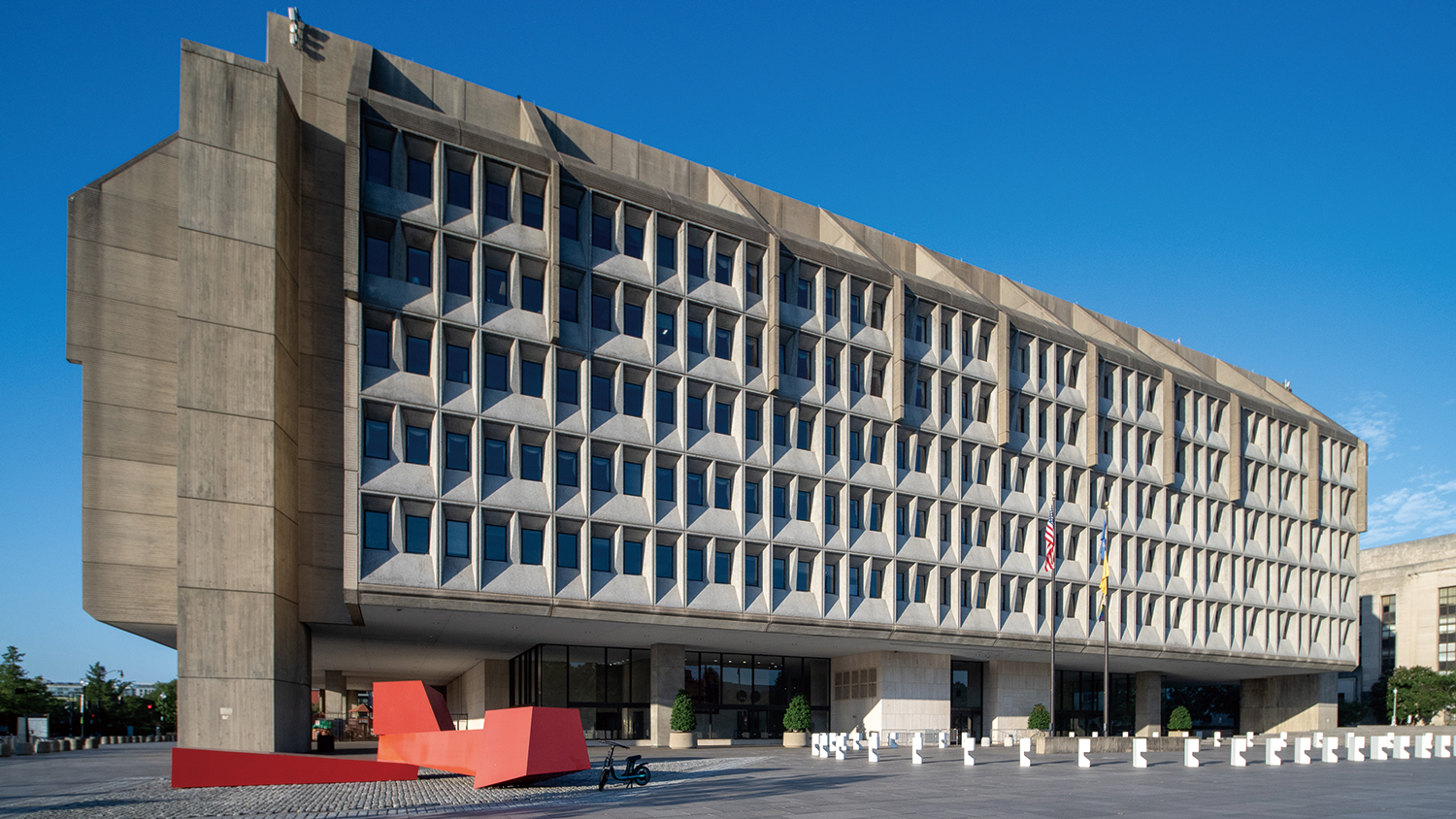
Hubert Humphrey Building, Headquarters of Department of Health and Human Services, Marcel Breuer, Washington, D.C. (1977). Wikimedia Commons / ©Ajay Suresh
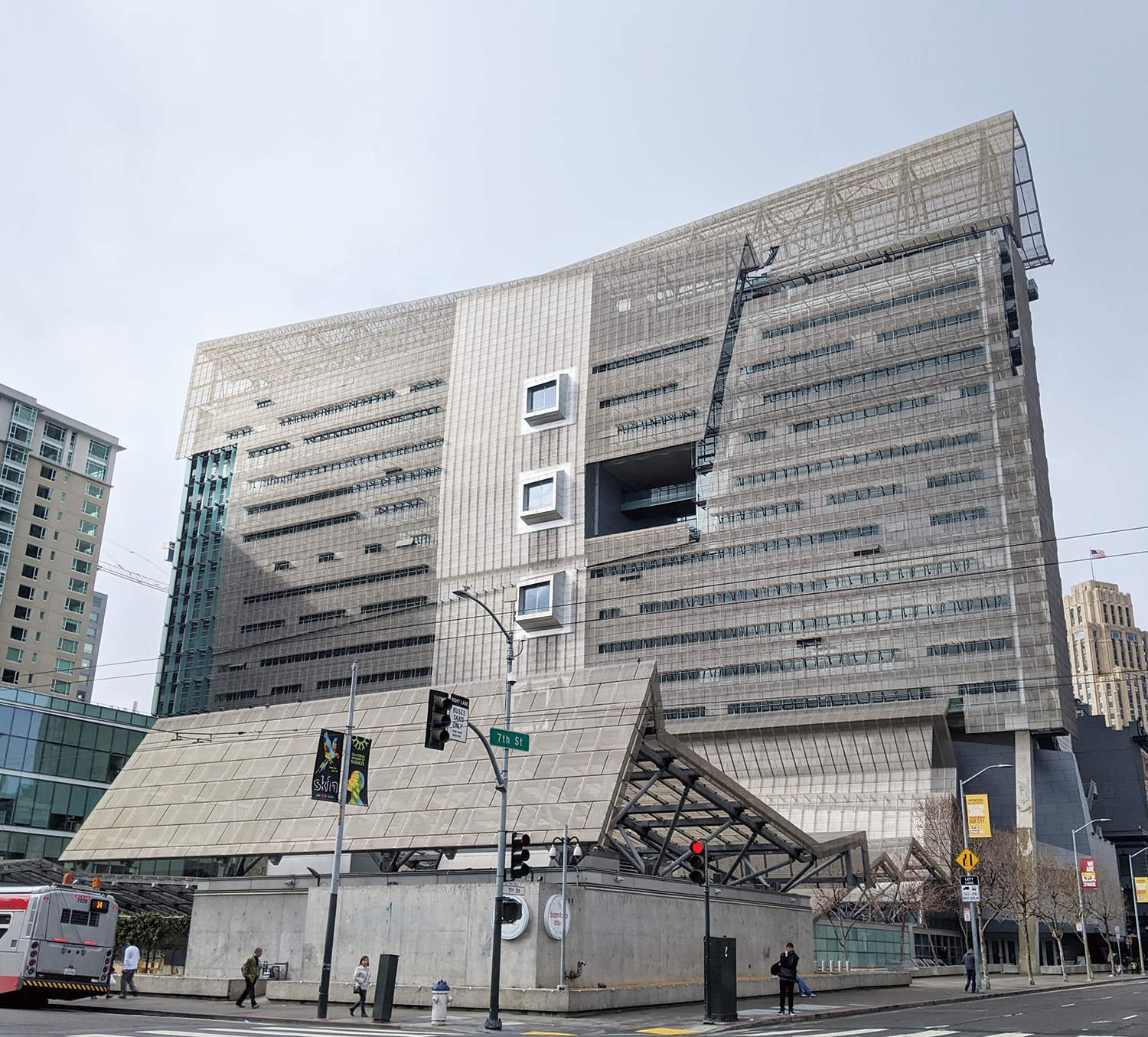
San Francisco Federal Building, Morphosis Architects (2007). Wikimedia Commons / ©HaeB
Trump’s interest in architecture became evident during his first term as president when on the 21st of December, 2020 he issued the ‘Promoting Beautiful Federal Civic Architecture’ Executive Order.▼2 It is unlikely that any government document before or since has contained so detailed and misguided a presentation of architectural history. Alongside discussions of the 1309 constitution of the City of Siena and Christopher Wren are critiques of Brutalism, a bête noire recognisable through ‘a massive and block-like appearance with a rigid geometric style and large-scale use of exposed poured concrete’ identified with the Hubert Humphrey Building in Washington, D.C., headquarters of the Department of Health and Human Services, and completed by Marcel Breuer in 1977. The ‘Deconstructivist’ architecture that emerged during the late 1980s fares even worse. This tendency is described as undermining ‘the traditional values of architecture through such features as fragmentation, disorder, discontinuity, distortion, skewed geometry, and the appearance of instability’, and though such qualities themselves chafe against a unitary definition or single example, the 2007 Morphosis-designed San Francisco Federal Building (formerly the Nancy Pelosi Federal Building) is understood to exemplify it. In an alternate reality, a presidential administration dedicated to disrupting the status quo might value an aesthetic of rupture.
The classical architecture of ‘Ancient Athens and Rome’ is henceforth to be the style of choice for all courthouses and agency buildings, all government buildings in Washington, and any costing more than 50 million USD in 2020, since it is most likely to ‘uplift and beautify public spaces, inspire the human spirit, ennoble the United States, and command respect from the general public.’ The capriciousness of the Executive Order and its focus on style over substance and historical accuracy is striking. Who knew that in addition to the Greek Revival or Roman precedents admired by Thomas Jefferson, classical architecture now stretches to include the eclectic oeuvre of Julia Morgan or the work of Daniel Burnham regarded as one of the inventors of the Chicago skyscraper? Another acceptable style is Art Deco, an odd choice, though perhaps appealing when one imagines government buildings in staid Washington D.C. resembling Manhattan’s jazzy Radio City Music Hall. But even more bewildering is the question, where did Donald Trump learn about Deconstructivism?
The likely answer is from Justin Shubow, founder in 2002 of the National Civic Art Society (NCAS),
who admits to having ‘instigated the executive order and had a hand in drafting it’.▼3 Prior to his current role as architectural advisor to the new administration, Trump appointed him chairman of the Commission of Fine Arts, a seven-member body with the power to approve buildings and urban planning in Washington. After winning the election in 2020, Joseph Biden removed Shubow and reversed Trump’s order that art in government buildings convey patriotic themes and shun abstraction.
That Shubow, untrained as an architect or urbanist, lacking an advanced degree (in architecture or related fields) or scholarly publications, unelected to political office, and not currently a government employee, has through his proximity to Donald Trump acquired a role with the potential to disrupt and damage the architectural mission of the GSA, and government design as a whole, makes him a key person to watch. In writings posted on his website, media appearances, interviews, and opinion pieces appearing in mainstream newspapers and publications, he has become the most vocal and visible opponent of modern architecture in the US, claiming that during the 1950s its practitioners attained a hegemonic control of federal architecture that has gone unchallenged until his ascent.▼4
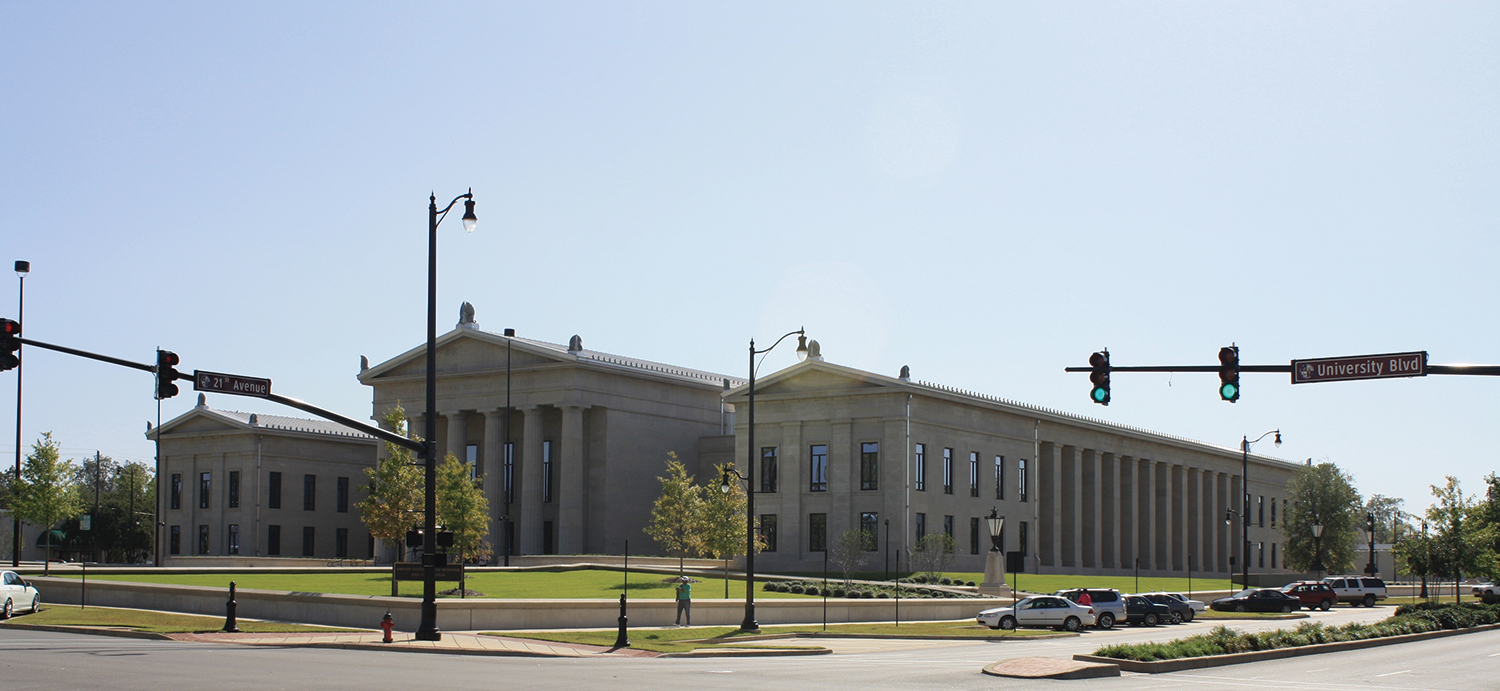
United States Federal Building and Courthouse, HBRA Architects, Tuscaloosa, Alabama (2011). Wikimedia Commons / ©Deutschlandreform
There has been some pushback against his views by the architectural community. Upon learning in 2020 of the draft guidelines, the American Institute of Architects (AIA) issued a sharply critical statement and more than 11,400 of its members – including many who admire classical architecture and draw on it in their design work – signed an online petition defending pluralism and opposing the imposition of a monolithic federal architectural style.▼5 For many Americans the legacies of classicism and neoclassicism bring to mind not only Washington, D.C. but also the Antebellum South whose plantations and civic buildings in the Confederacy and cultural identity classicism did much to establish. Such architecture (far more complex than Shubow acknowledges) cannot without gross oversimplification be reduced to the preferred style of Nazis, slave owners, or the democratic spirit of the enlightened founders of the American republic. His crude correlation of architectural form with politics and philosophical systems would not pass muster in a student paper in an introductory architecture class.
Every authoritarian regime – Nazi Germany, Fascist Italy, and the Stalinist Soviet Union – that abandoned architectural pluralism also forfeited at the same time democratic institutions and culminated in terror. To minimise this suggests a frightening obtuseness to real – as opposed to illusory – history.
Although ostensibly soliciting input by the general public for the design of buildings intended to ‘speak to the sorts of people we wish to be’, the Executive Order bars the participation of ‘artists, architects, engineers, art or architecture critics, instructors or professors of art or architecture, or members of the building industry; or affiliated with any interest group, trade association, or any other organisation whose membership is financially affected by decisions involving the design, construction, or remodeling of public buildings.’ Like the many officials in the Trump administration who deny scientific progress, Shubow is wary of expertise, unless it is his own, yet notes on his website he is an advisor to the GSA.
This year on the 20th of January, Trump signed a second Executive Order reinstating the substance of the one he signed in 2020, though far shorter.▼6 As of early June, the guidelines he requested within 60 days from the GSA had not yet published. Although surprisingly few individual architects have expressed opposition to this second attempt to impose a unified stylistic regimen, the AIA protested, this time emphasising the cost cutting so important to the administration. In letter to the GSA of the 20th of March, its acting director Steven T. Ayers wrote, ‘Prescriptive style mandates stifle innovation, limit architectural diversity, and disregard the unique cultural and historical contexts of local communities. Further, classical architecture, while an important element of our nation’s architectural legacy, often demands expensive materials, longer construction timelines, and higher maintenance costs—burdens that ultimately fall upon taxpayers.’▼7
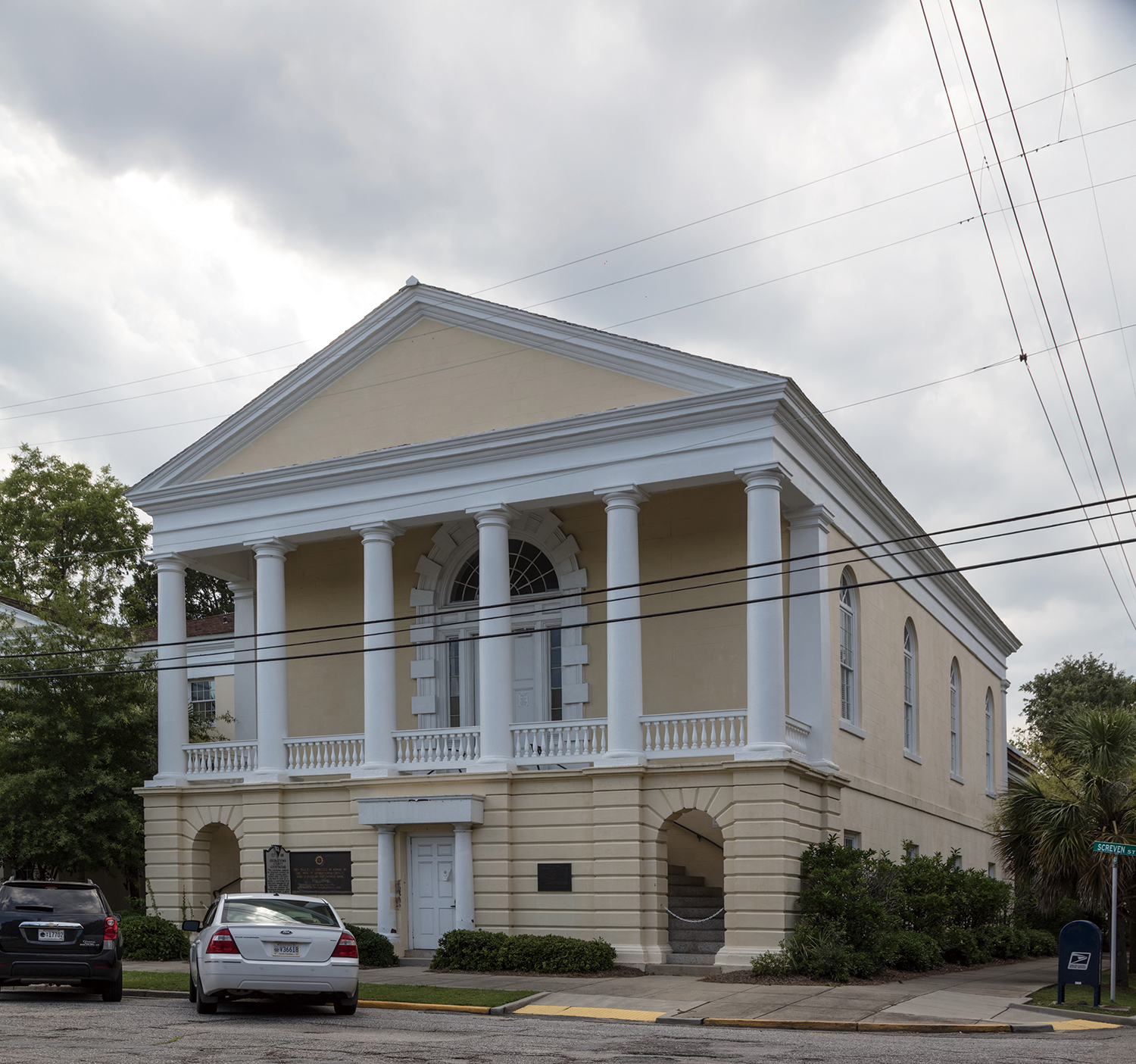
County Courthouse, Robert Mills architect, Camden, South Carolina (1825). Image courtesy of Carol M. Highsmith Archive, Library of Congress, Prints & Photographs Division
Trump’s obsession with the headquarters of the Federal Bureau of Investigation (FBI), the Brutalist J. Edgar Hoover Building (1975, C.F. Murphy Associates), suggests it may be among the first Washington agency buildings whose reconstruction will be informed by his recent order. The symbolism of designing a new head office for the national law enforcement agency in alignment with his freshly reaffirmed design principles may prove impossible to resist. On the 15th of May, FBI director Kash Patel announced the building will be closed and its 1,500 employees relocated. Its future remains uncertain.
When Shubow and Victoria Coates, vice president of Heritage Foundation (best known for its Project 2025 plan that has served as playbook for the second Trump administration) advocated the demolition of the James V. Forestall Building (1969, Curtis and Davis Architects and Engineers) in the 12th of March, 2025 opinion piece in The Washington Post, which houses the Department of Energy, now restructured so as to promote fossil fuel extraction (solar and wind power go unmentioned) and help the agency become the ‘technological and resource arm of the burgeoning new cold war between China and the United States’. They tipped their hand and revealed the critique of brutalism to be a trojan horse for a key element of the actual Republican agenda: climate change denialism.▼8
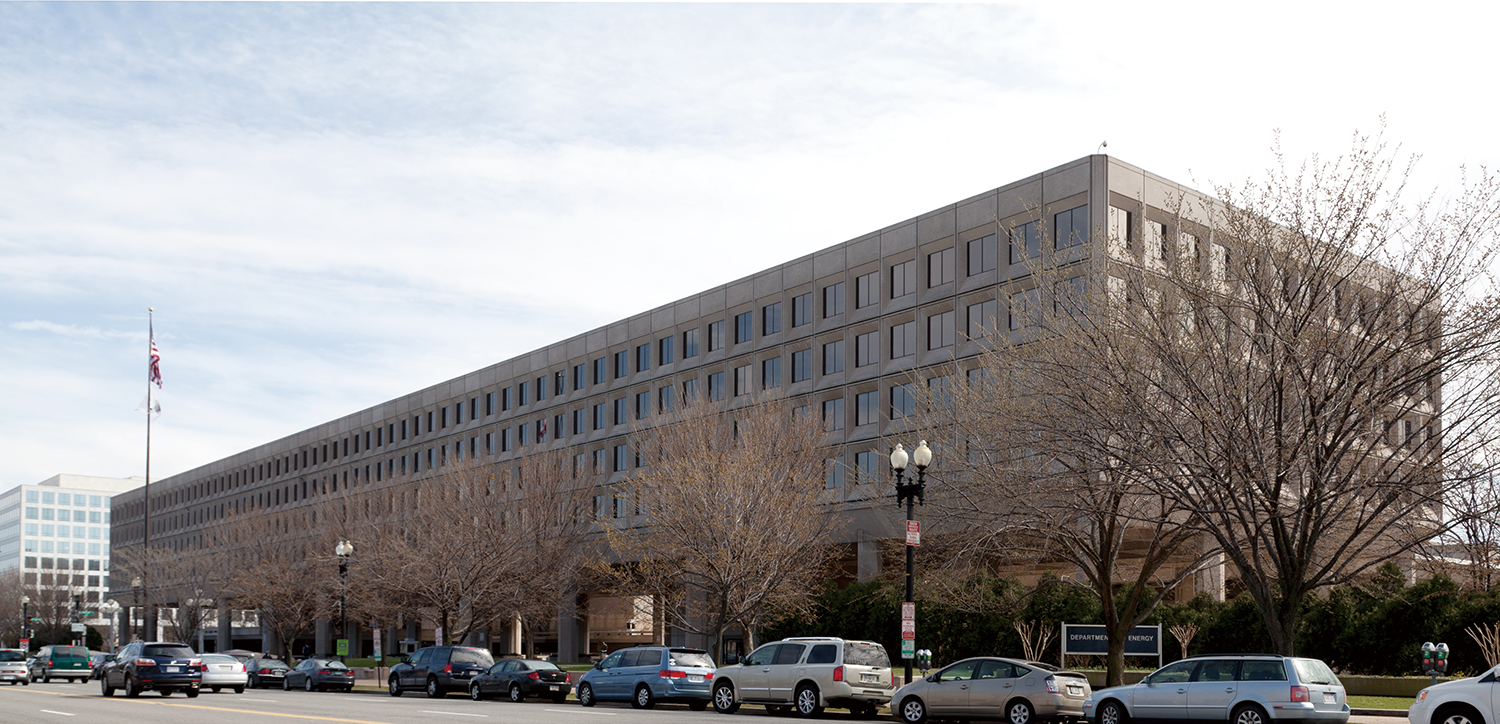
James V. Forestall Building, Headquarters of the Department of Energy, Curtis and Davis Architects and Engineers, Washington, D.C. (1969). Image courtesy of Carol M. Highsmith Archive, Library of Congress, Prints & Photographs Division
Yet with one significant exception, no rendering of a government building informed by Trump’s Executive Order has yet been published. The demolition in 1963 of Pennsylvania Station – the 1910 masterpiece by McKim, Mead & White and the major rail station in New York City—in what Moynihan called ‘the single greatest act of vandalism in the history of New York’ – is an unhealed wound. Six decades later, it remains the Bermuda Triangle of American urban architectural redevelopment into which countless design proposals have disappeared and quarrels between property owners, developers, and government agencies have stalled improvements of a transportation hub described as a rat maze.
The most recent stakeholder to enter the fray is Trump, who on the 17th of April wrested control of Penn Station and its future from the New York Metropolitan Transit Agency, citing federal ownership of the national rail line, Amtrak. In the midst of this controversy, architect Alexandros Washington working with the non-profit Grand Penn Community Alliance has circulated renderings of his proposed new design ‘inspired’ by the original McKim, Mead, & White building that includes a train shed attached to a park and a colonnade with Doric columns on 7th Avenue.▼9 To believe a monumental civic structure and complex piece of urban infrastructure could or should be reconstructed according to its original design and not be reconceived from the ground up, so as to respond to contemporary technology and needs has generated concern among members of the architecture and design community.▼10
Thomas Klingenstein, a hedge fund manager, and board member of Shubow’s organisation and of the conservative Claremont Institute think tank,▼11 has emerged as a champion of the design.▼12 That a civic structure of profound historical and urban infrastructural significance is being advanced by private individuals more concerned with patriotic values than freedom of expression is troubling, but not as alarming as Shubow’s proposal that its construction be fast tracked along the lines of the ‘Operation Warp Speed’ Covid vaccine development project. After the bungled attempts by Department of Government Efficiency (DOGE) to dismantle federal agencies at breakneck speed, rebuilding Penn Station in a similar manner does not inspire confidence.
What ultimately is at stake in Shubow’s project to remove architectural modernism from federal architecture? Surely not function and the creation of civic buildings capable of meeting programmatic specifications and enhancing the lives of employees and citizens. In his incessant stream of writings, Shubow scarcely mentions programmes, functions, and the interior design of buildings, suggesting he is, in the Italian phrase, a facadista, preoccupied above all else with external appearance and spectacle. Apart from insisting Washington remain a museum piece, he seems indifferent to urban form and to believe only individual buildings can improve cities.
Trump associate Steve Bannon notoriously observed that ‘politics is downstream from culture.’ Determining who or what is American is a high stakes endeavour. Yet it is one radically at odds with advances in architecture that typically involve the movement of people, ideas, and technologies across national boundaries. The international outlook such exchanges presuppose is far removed from the monolithic classicism promulgated from above and validated by ideologically scrubbed publics insulated from professional expertise that Shubow and his associates promote.
Ongoing attempts by the Trump administration to challenge scientific understandings of medicine and climate change, control universities, rewrite American history, remove books deemed offensive from public library shelves, dictate elementary school curricula, defund the arts and humanities, and determine cultural policy at museums and performing arts institutions provide no grounds for architects to conclude they will remain able to work without interference.
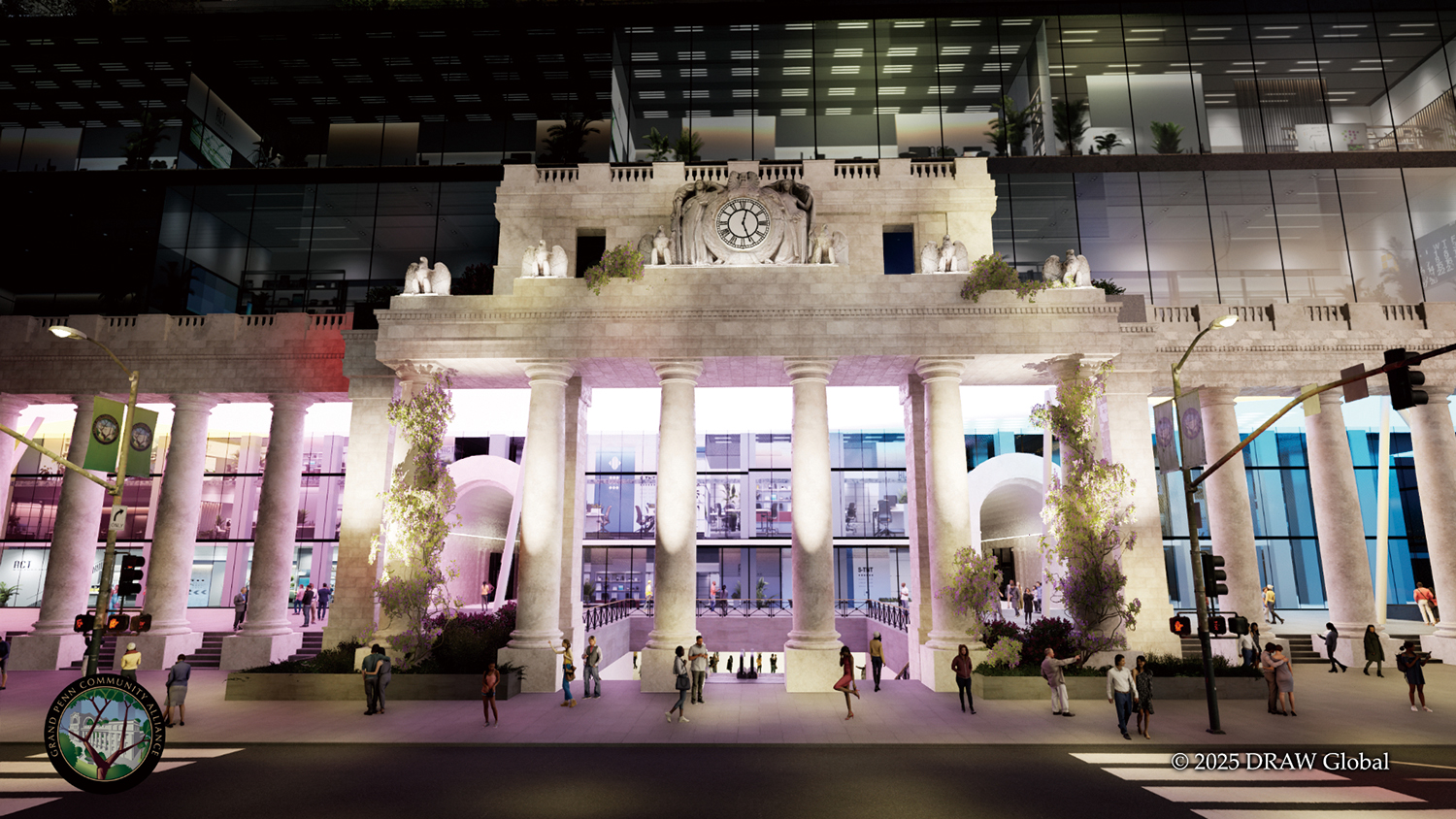
Rendering of 7th Avenue entrance to Penn Station adjacent to Vornado Realty Trust Building, Alexandros Washburn (2024). Image courtesy of Grand Penn Community Alliance
For better or worse, the twentieth century demonstrates that trends in the US often spread beyond its borders. Should the Shubow-Trump agenda prevail, leaders of other nations might well be inspired to follow the American example and wrest control of architecture in their own countries. Today, architects in the US urgently need support from members of the international architectural community. The shortsighted isolationism of the Trump administration must not obscure the larger stakes of the crisis in the US for architects everywhere.
In a volatile political environment that changes from one day to the next, predicting future outcomes is ill advised. Nonetheless, three scenarios (or variations on them) seem likely. In the first, disorganisation, growing staff shortages, and incompetence in the GSA coupled with value engineering would result in little, if any, building. Inflammatory ideas ultimately would be proven a smokescreen to distract attention from other items on the Republican political agenda. A second possible outcome would be modest success and the flourishing of Greek temples and insipid classically styled buildings across the country. Challenges by architects and municipalities might be litigated in the courts and yield an occasional victory for those who opt for different approaches. But the ground will have shifted.
The third and most dystopian outcome would be a successful standardisation, encapsulated in the Nazi word Gleichschaltung, leading to the control of all architecture, even buildings not commissioned by government. Local design review boards could issue codes that demand conformism, or simply grind architects down by requesting endless time-consuming minor revisions of plans submitted for approval. Developers and institutional clients would gravitate toward designs unlikely to prove controversial. Architects faced with the need to survive architects would stifle their imaginations and deliver them. Those who run afoul of the administration could well be pressured to design the Trump Presidential Library pro bono. The most dire version of this reality would silence architects working in styles and modes deemed unpatriotic, beginning with those committed to diversity who are not native born, white, male, heterosexual, and Christian.
There is one unavoidable imperative architects who live or work in domains thus far untouched by Trump’s wrath and quest for power ignore at their own peril. They must remain vigilant and never assume to quote the title of the 1935 dystopian novel by Sinclair Lewis: ‘It Can’t Happen Here.’
This article is first published in German in Bauwelt June 2025.
1 https://www.gsa.gov/real-estate/design-and-construction/design-excellence-program/guiding-principles-for-federal-architecture
2 https://www.federalregister.gov/documents/2020/12/23/2020-28605/promoting-beautiful-federal-civic-architecture
3 https://www.civicart.org/
4 ‘About - Justin Shubow’, https://shubow.com/about/
5 ‘Immediate Action Needed Contact the White House NOW!’, https://p2a.co/eH3Mx8N
6 ‘Promoting Beautiful Federal Civic Architecture – The White House’, https://www.whitehouse.gov/presidential-actions/2025/01/promoting-beautiful-federal-civic-architecture/
7 https://www.aia.org/about-aia/press/aia-sends-letter-acting-administrator-general-services-administration
8 ‘My Washington Post Op-Ed: the Brutalist Forrestal Building, Headquarters of the Dept. of Energy, Must Be Demolished - Justin Shubow’, https://shubow.com/my-washington-post-op-ed-the-brutalist-forrestal-building-headquarters-of-the-dept-of-energy-must-be-demolished/#:~:text=The%20March%2012%2C%202025%20Washington%20Post%20featured%20an,Energy%20Department.%20By%20Victoria%20Coates%20and%20Justin%20Shubow
9 ‘Classical Architecture and the Future of New York’, https://tomklingenstein.com/classical-architecture-and-the-future-of-new-york/
10 Penn Station redesign gets support from a GOP donor. https://www.archpaper.com/2025/03/amid-political-rumblings-and-a-call-for-more-housing-a-penn-station-redesign-gets-support-from-a-gop-donor-and-revives-the-call-to-move-madison-square-garden/
11 https:/www.claremont.org/
12 ‘The Bold Vision to Make Penn Station Great Again’, https://tomklingenstein.com/video/the-bold-vision-to-make-penn-station-great-again/
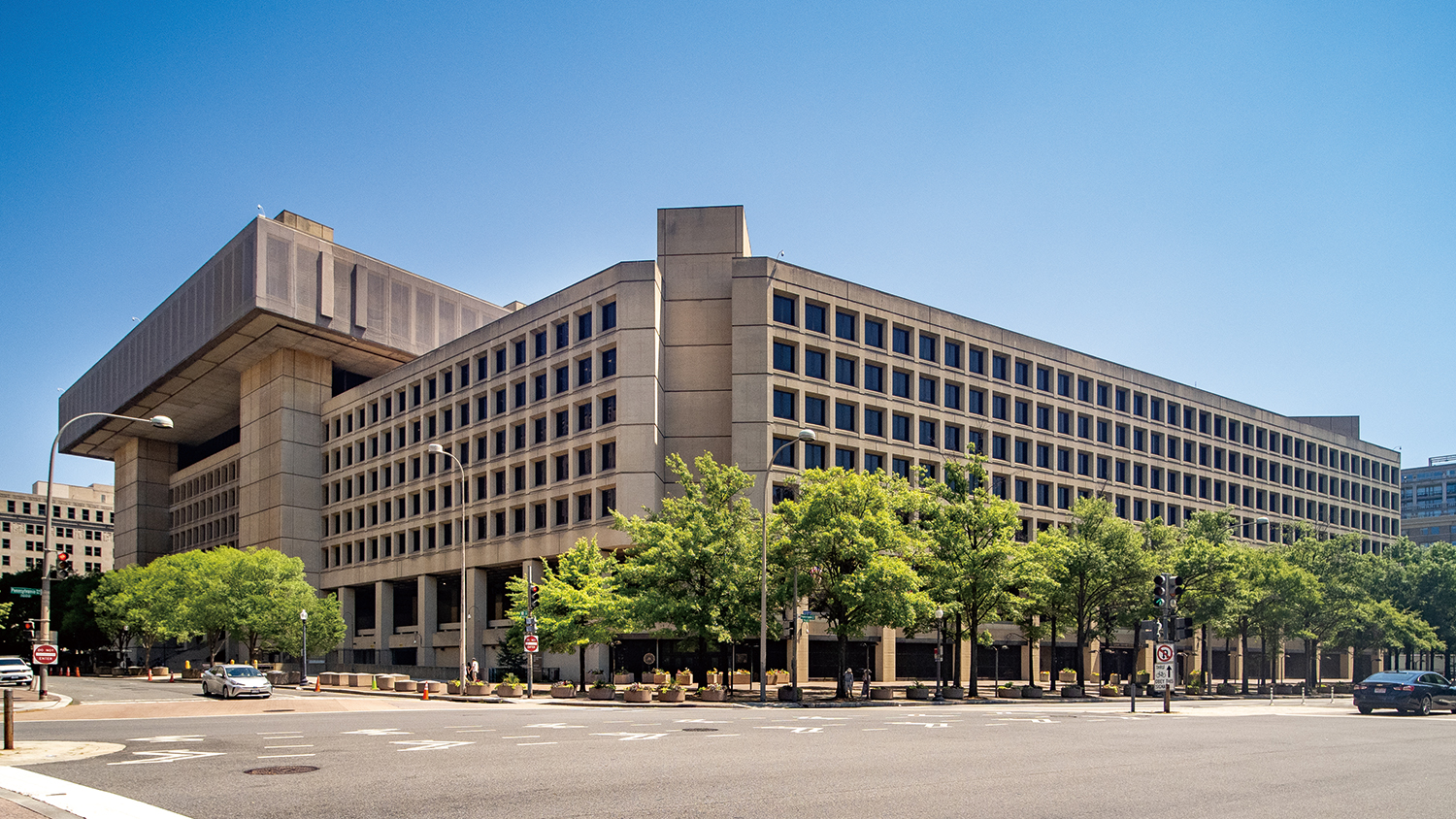
J. Edgar Hoover Building, Headquarters of Federal Bureau of Investigation, C.F. Murphy Associates, Washington, D.C. (1975). Wikimedia Commons / ©Ajay Suresh
